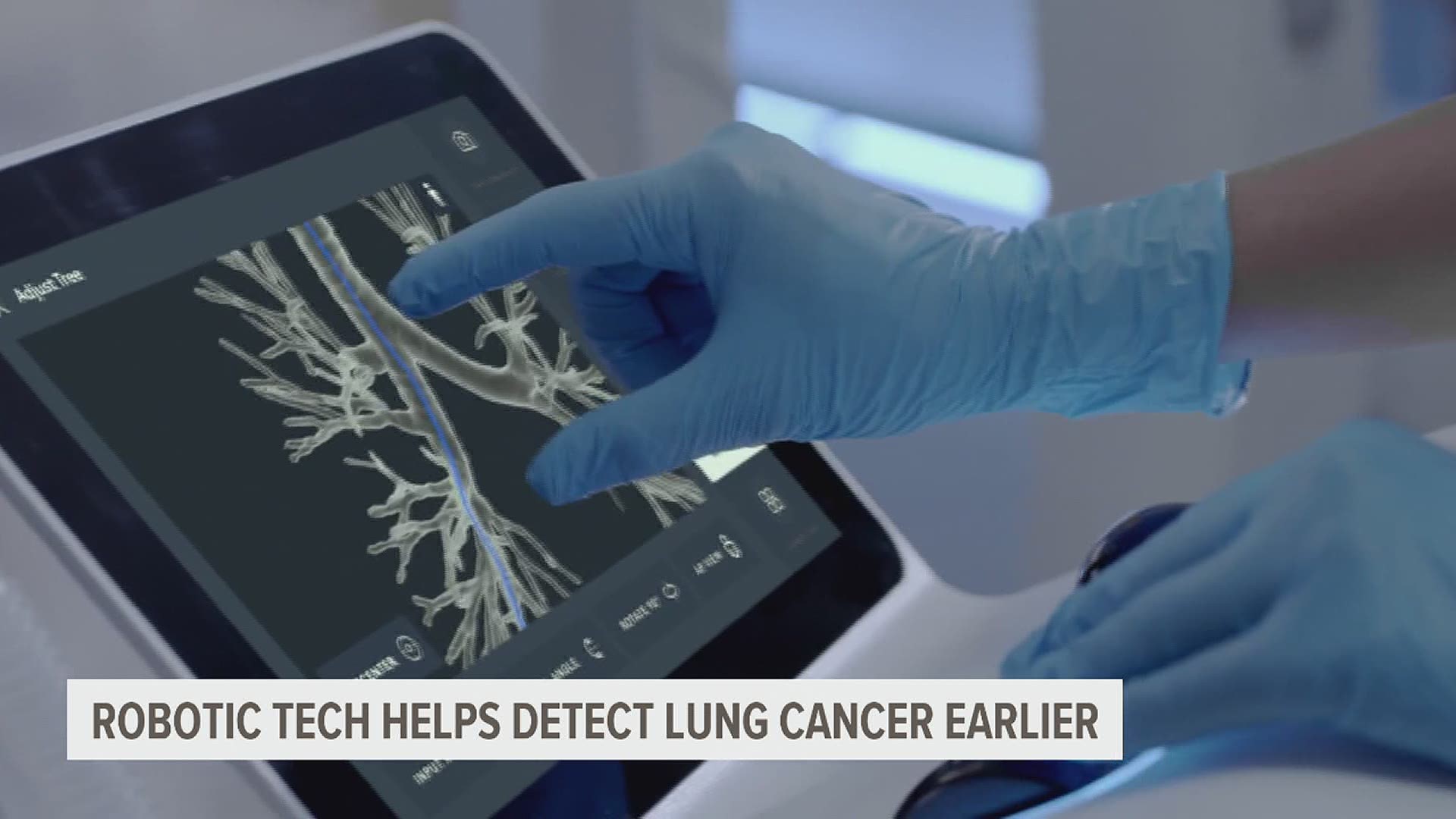YORK, Pa. — More than 90% of people diagnosed with lung cancer do not survive the disease, in part because it often is found at an advanced stage. However, when diagnosed early, the average five-year survival rate is 92%. Now, new technology available at UPMC Pinnacle West Shore can diagnose lung cancer earlier. In fact, they are the first hospital in South Central PA to use the platform for lung biopsy. Similar minimally invasive robotic-assisted systems are offered at UPMC Hamot in Erie and UPMC Passavant in Pittsburgh.
Troy Moritz, D.O., F.A.C.O.S., is the Chief of Thoracic Surgery at the UPMC Esophageal and Lung Surgery Institute. He says lung cancer is the leading cause of cancer deaths worldwide, partly because it has no symptoms in it's early stages. The other reason is because more than 70 percent of nodules that need a biopsy are so far out in the peripheral lung, there was no way to detect them....until now.
Enter Ion, by Intuitive. The new robotic-assisted system allows doctors to use a minimally invasive endoscope to see inside the lungs, and get a biopsy from hard-to-reach areas. The technology integrates the latest advancements in robotics, software, data science and endoscopy, or the use of small cameras and tools to enter the body through its natural openings. It's possible in part thanks to the flexible catheter with a camera on the end. "So you can drive it and steer it and you can see the next turn or the next division of the airway and very accurately go down that pathway," Dr. Moritz said. "The technology allows us to be a lot more precise and accurate, so we can start to biopsy smaller and smaller lesions and that basically equates to finding cancers earlier and earlier," he said.
There are a variety of diagnostic options currently available for lung cancer, but all have limitations in accuracy, safety or invasiveness. These limitations can lead to false positives, false negatives, or side effects such as pneumothorax (collapsed lung) and hemorrhage, which may increase health care costs and extend hospital stays. The Ion is designed to provide more reach, more stability and more precision for lung biopsy. It's because of that, he expects more hospitals to start advancing their tech as well.
However, it's the future at UPMC that he's most excited about. "We'll be able to biopsy a lesion and then send another catheter down if it's confirmed to be a cancer and we'll be able to ablate that small tumor right there on the same day," Dr. Moritz said.
That's right, within a year or two, Dr. Moritz hopes they'll be able to advance their tech even more, diagnosing patients and removing the cancer all at the same time.
For more information on the UPMC Esophageal and Lung Surgery Institute, click here.
For more information on The Ion by Intuitive, click here.


